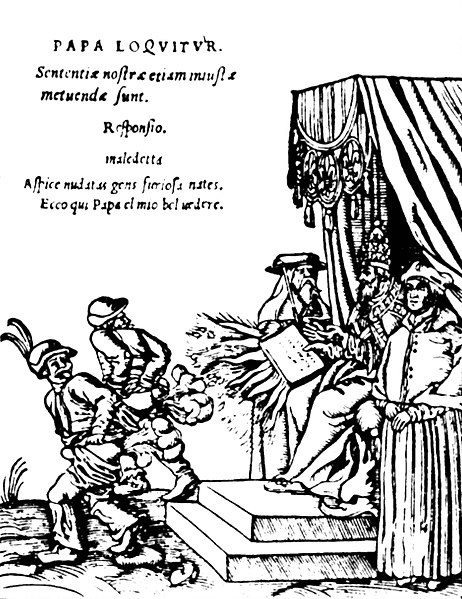Anti-Italianism or Italophobia is a negative attitude regarding Italian people or people with Italian ancestry, often expressed through the use of prejudice, discrimination or stereotypes. Often stemming from xenophobia and anti-Catholic sentiment, it has manifested to varying degrees in a number of countries, notably the United States, Switzerland, Germany, Belgium and the United Kingdom. Its opposite is Italophilia, which is admiration of Italy, its people, and its culture.
Illustration of rioters breaking into parish prison, during the 1891 lynchings in New Orleans.
Massacre in France, 1893
Anti-Catholicism is hostility towards Catholics and opposition to the Catholic Church, its clergy, and its adherents. At various points after the Reformation, some majority-Protestant states, including England, Northern Ireland, Prussia, Scotland, and the United States, turned anti-Catholicism, opposition to the authority of Catholic clergy (anti-clericalism), opposition to the authority of the pope (anti-papalism), mockery of Catholic rituals, and opposition to Catholic adherents into major political themes and policies of religious discrimination and religious persecution. Major examples of groups that have targeted Catholics in recent history include Ulster loyalists in Northern Ireland during the Troubles and the second Ku Klux Klan in the United States. The anti-Catholic sentiment which resulted from this trend frequently led to religious discrimination against Catholic communities and individuals and it occasionally led to the religious persecution of them. Historian John Wolffe identifies four types of anti-Catholicism: constitutional-national, theological, popular and socio-cultural.

A famous 1876 editorial cartoon by Thomas Nast, an immigrant from Germany who had been raised as a Catholic. It portrays bishops as crocodiles who are attacking public schools, with the connivance of Irish Catholic politicians.
From a series of woodcuts (1545) usually referred to as the Papstspotbilder or Papstspottbilder, by Lucas Cranach, commissioned by Martin Luther. "Kissing the Pope's feet"; German peasants respond to a papal bull of Pope Paul III. Caption reads: "Don't frighten us Pope, with your ban, and don't be such a furious man. Otherwise we shall turn around and show you our rears".
Passional Christi und Antichristi, by Lucas Cranach the Elder, from Luther's 1521 Passionary of the Christ and Antichrist. The Pope as the Antichrist, signing and selling indulgences.
Foxe's Book of Martyrs glorified Protestant martyrs and shaped a lasting negative image of Catholicism in Britain.






